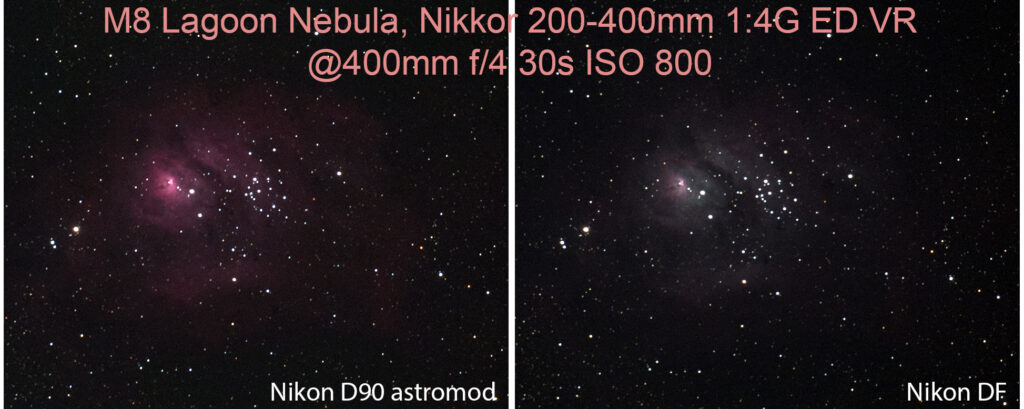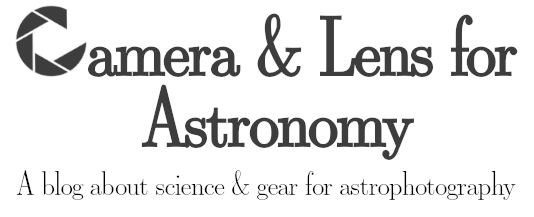Date published: 2016-11-13
Nikon D90 astromod VS. Nikon DF unmodified
It is fact that Nikon’s DF is among the most sensitive camera’s available on the market today. Its FX format CMOS chip offers 16.2 million pixels. The corresponding pixel size of 7.3μm is thus large compared to most other state-of-the-art cameras (with typical sizes of less than 5μm). As a result the Nikon DF has much better low-light, high-ISO performance.
However, as all unmodified cameras also DF’s CMOS detector is covered by an infrared (IR) blocking filter. This is unsatisfactory for astrophotography, in particular when imaging nearby star-forming regions. The reason is that young, massive stars emit hard UV radiation that leads to the ionization of the surrounding hydrogen. Subsequent recombination of free electrons with ions then produce strong emission lines such as the Hα line at approx. 656nm (in the red part of the spectrum). This wavelength unfortunately is already blocked by the IR filter found in almost all digital single-lens reflex (DSLR) cameras.
For that reason, some companies such as DSLR Astro Tec in Germany recently have specialized on modifying DSLRs. Different modifications exist, the one for astrophotography is basically a replacement of the IR-blocking filter with a clear-glass filter. This modification drastically increases the sensitivity of the camera at the wavelength of the Hα emission line. This modification comes at the cost of the camera’s white-balance, which then needs to be set manually. However, for astrophotography this doesn’t play a role anyway.
Since I own an unmodified Nikon DF and a modified Nikon D90, I was wondering how these two cameras would compare to each other when imaging star forming regions such as e.g. M8, the Lagoon nebula. In order to perform the test, I have used my Nikkor AF-S VR 200-400mm 1:4 lens, operated at 400mm f/4 and took images of the nebula using both cameras. In both setups the exposure time was set to 30 seconds at ISO 800. The result is shown below. Both images were taken in raw format and only brightness and contrast were adjusted in the same way. The result makes clear that an astro-modified D90 clearly outperforms even Nikon’s low-light market leader, the Nikon DF.

